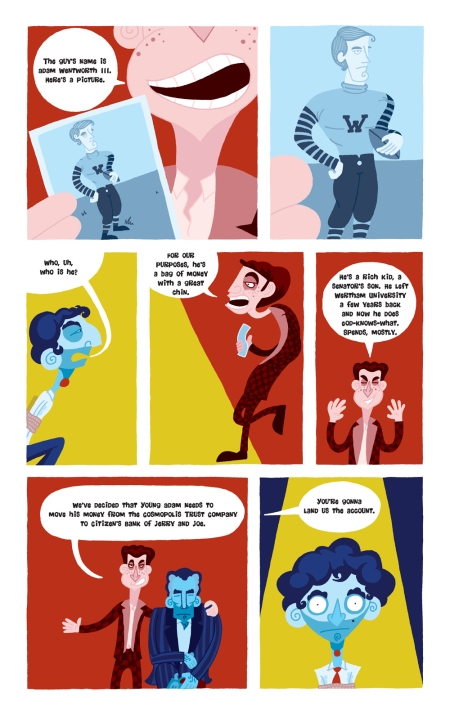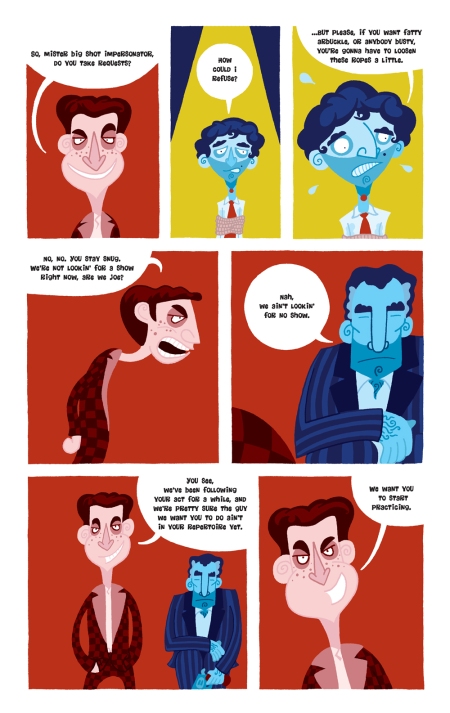
In the same way that it’s hard to believe in a religion founded last week, it’s tough to put a lot of stock in a “mythical beast” that’s ten years younger than you are. For some reason, credibility clings to old stories. As successive layers of myth accumulate, legends get bigger, tougher, and more powerful, just like rubber band balls.
Legends from our own time seem flimsy, though. I’m glad we’re still making them, but it’s kind of embarrassing to watch us do it. You don’t want to be in that kitchen, watching people stir together half remembered “X-Files” episodes and copycat sightings, cooking up their 15 minutes of fame. You’ll really lose your appetite.
That’s kind of how I feel about the Chupacabras.* It just sounds kind of crazy. The name Chupacabras means “goat sucker,” and it’s a pretty fitting moniker. According to legend, the monster kills goats and other livestock by draining their blood through tiny puncture wounds. It’s supposed to be reptilian, or, at least look like a reptile with thick leathery skin. It hops like a kangaroo, has spines down it’s back, and glowing red eyes (which are often described as the eyes of “gray” aliens, totally dating this creature, I think**). It smells nauseatingly bad, is three or four feet tall, and lives all over the world, but no one ever saw one until 1995? It just doesn’t make sense.
The first sighting was reported in Puerto Rico, in 1995, but soon, sightings (and bloodless goat bodies) started appearing across the Spanish-speaking world, especially Texas, which has kind of become the Chupacabras capital of the world. Eventually, reports started surfacing in places as far-flung (not that Texas and Puerto Rico present too compact of a region to begin with) as Maine and Russia. It just seems like hysteria to me, especially since the woman who first described the creature based her description on an alien from the movie Species.
Still, the hard thing to overlook is that someone is sucking goats. Could humans have been poking tiny holes in livestock and sucking out all the animals’ blood (and sometimes organs!) as a means of, I don’t know, securing places in top-tier cults and fraternities? Maybe, but that can’t have happened too often. And the argument doesn’t end there. Surprisingly, there’s actually a lot of hard Chupacabras evidence floating around. There are photos, videos, even specimens — google it sometime for a gross afternoon.
None of the dead Chupacabras people turn up have spikes or glowing red eyes, but they are pretty weird. They all look like dogs, but hairless, with thick, blue-gray skin. They have long snouts, big, vampire-looking fangs, and mismatched legs (the front ones are considerably shorter than the back ones). They pretty much always turn out to be deformed coyotes, suffering additionally from mange and parasites (which cause things like baldness, discoloration, and stench).
Anyway, the reigning theory is that these guys are two weak to hunt, so they attack livestock instead of running stuff down. Maybe the blood-drinking thing is a convenience too, maybe it’s easier than eating an animal the conventional way. Maybe it’s symptomatic of one of the diseases these coyotes have. I don’t know. Surprisingly, I didn’t read anything about it either way. It’s also a little weird that this didn’t become a phenomenon until the 1990s. Were there never sick/mutated coyotes before? Still, the weirdest thing of all is that there may have been a lot of truth to this legend. Sucking out organs, pretty crazy.
I guess all this amounts to the fact that I could have/should have drawn a mangy dog for this one, but the little gremlin was a lot more fun. The goats were great too.
Still, I’m not so into this drawing. The monster design is pretty boring, the words in the sun might be too much (in fact, the sun itself might be unnecessary), and some of the logistics don’t make sense. Why is the Chupacabras outside the fence if he’s just been draining goats? Has he been coming and going, maybe? Drinking one goat a day? The drawing might have been more ominous if he were looming in the foreground, maybe just a head and hands in silhouette. In the middleground could be the one scared goat, surrounded by his dead flock. That would require me to hide the monster, though, but, given his so-so design, that might not be so bad. If I have time to redo this one later, I probably will.
I’m still proud of some digital reworking I did on this one, though. Initially, the Chupacabras was draining the last living goat with the aid of a Crazy Straw. It didn’t really read. Using the track pad, I erased it and added the little bendy straw in his hand, which I hope is at all clear (in what it is and what it means).
Well, if you’re still with me, congratulations. This has definitely been my longest entry. Why I felt compelled to write so much on this I have no idea.
*Yeah, I used to think it was Chupacabra too, but it’s apparently Chupacabras, singular or plural, el or los.
**Are those guys a big ’90s thing, or is it just that that’s when I was a kid and really into aliens?











